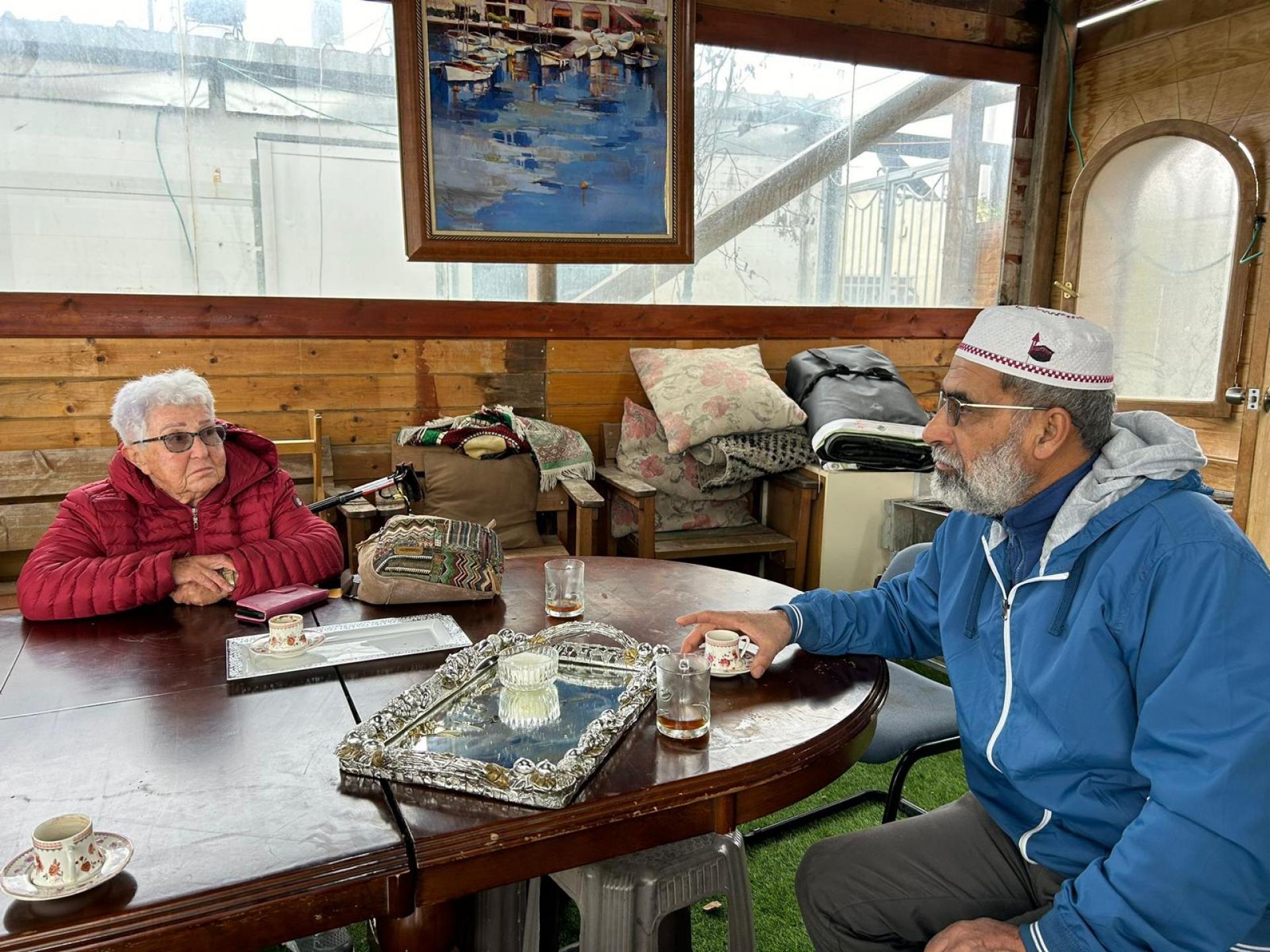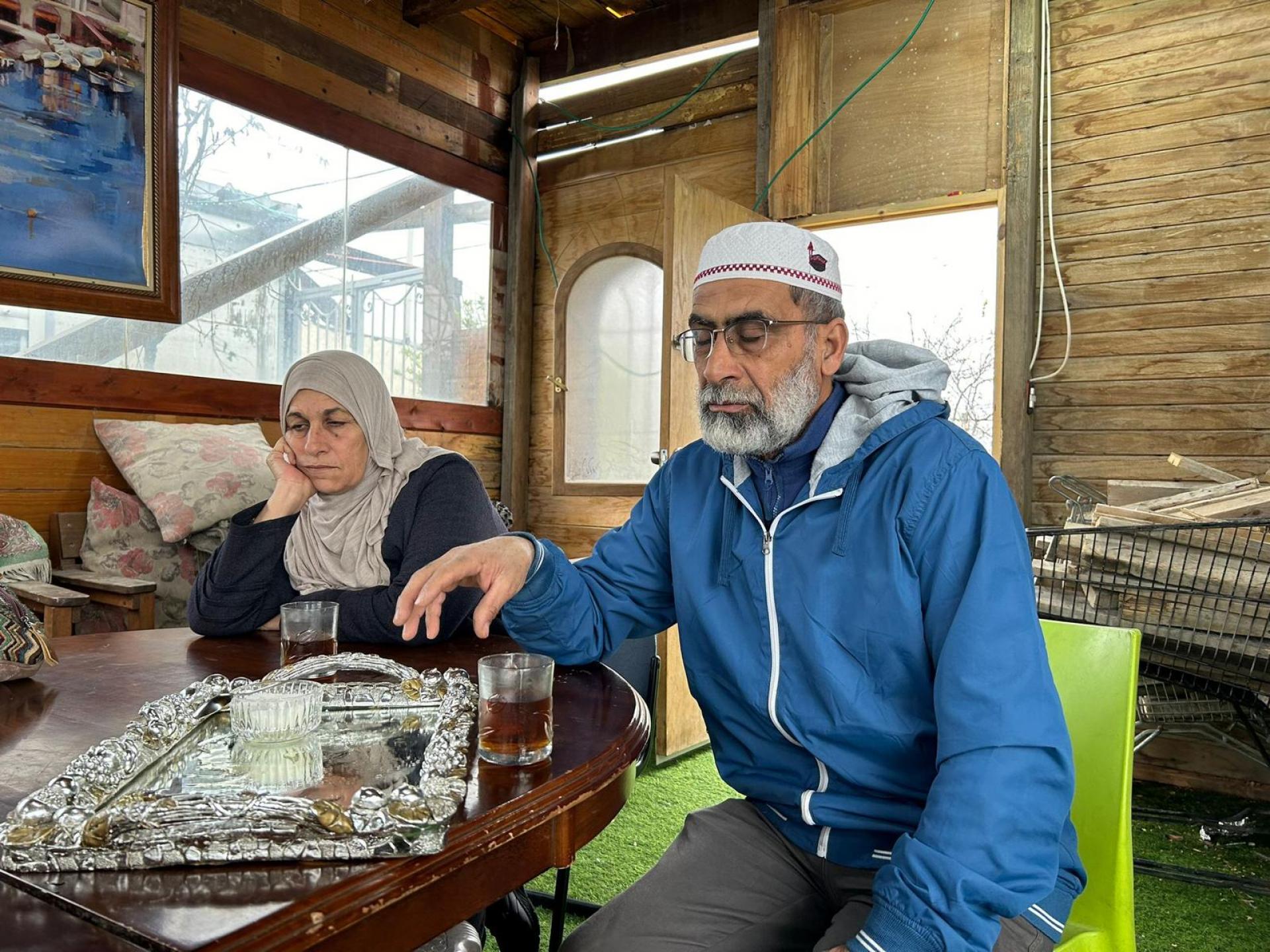Nabi Samwil: We're back to visit old friends
10 years after the screening of the film produced by MachsomWatch (Karin Lindner and director Eran Torbiner) about the village of Nabi Samwil in northern Jerusalem, we returned to visit old acquaintances. We wanted to know what had changed since its final closure as a Palestinian enclave cut off from both the West Bank and Jerusalem in 2014. 10 years ago, the story of the village provoked many protests and echoes in the arena of the organizations of the struggle against the occupation, but it turns out that the situation has only gotten worse since then, that today there is almost no public interest in the situation of the residents of the declining village, and there are almost no visits by peace organizations’ activists. We received an offer from "Bnei Avraham" to collaborate with their visits to the village, but it hasn’t worked out yet.
as a Palestinian enclave cut off from both the West Bank and Jerusalem in 2014. 10 years ago, the story of the village provoked many protests and echoes in the arena of the organizations of the struggle against the occupation, but it turns out that the situation has only gotten worse since then, that today there is almost no public interest in the situation of the residents of the declining village, and there are almost no visits by peace organizations’ activists. We received an offer from "Bnei Avraham" to collaborate with their visits to the village, but it hasn’t worked out yet.
Nebi Samuel is also known as the tomb of Samuel the Prophet and is sacred to the three religions - the Orthodox Christians, the Muslims and the Jews. For the Jews, the 28th of Iyar is considered the Prophet Samuel’s day of death. Jewish sources show documentation regarding the place starting from the 12th century. The Christians and Muslims recognized it even earlier. The village Nabi Samwil is named after the grave and it dominates its surroundings from an altitude of 884 m above sea level.
Since the construction of the separation barrier in the Nabi Samwil area was completed, the village found itself trapped in a "transparent cage" (see the article by Ziona Snir, Mahsom Watch member, from 2014). From the east and west the village is surrounded by the separation barrier. To the north, the village is blocked by road 443, which for the Israelis is the fastest route from Jerusalem to Ben Gurion Airport and for the Palestinians is a direct source of the expropriation of their lands and a symbol of the separation policy. To the south, from Ramot to road 443, stretches a sort of corridor where the settlements of Heruti, Har Shmuel, New Gibeon and Pisgat Ze'ev are located. The last obstacle to turning the area exclusively Jewish are the small Palestinian villages of al-Halaila, which is a target for arbitrary demolitions and harassment by the army and the civil administration , and the village of Nabi Samwill.
, and the village of Nabi Samwill.
After the Six Day War, more than a thousand people lived in the village, some of whom fled. In 1968, the "Tomb of the Prophet Shmuel" cave was opened to visitors. In 1971 the village was destroyed by the IDF and the residents were pushed to the hill east of the site. Today, about 250 residents live in the village. Most of them were not granted Jerusalem residency certificates. In 1995, the Rabin government declared 3,500 dunams surrounding Nebi Samuel as a "national park". In addition to being a method of unilaterally taking over an area, the declaration of a national park allows the various authorities, and in this case first of all the Civil Administration, to enforce a strict policy that prohibits any change in the area. An extension to a house, a small fence that was built to keep the farm animals from escaping, a necessary renovation to a residence - everything was destroyed. Olive tree seedlings that were planted - were uprooted and more and more. And of course no chance in hell for new construction at all.
Freedom of movement is severely restricted for the residents of this ancient village. They are not entitled to enter Jerusalem! They can only leave the village according to a list, and only through the El Jib checkpoint that separates the enclave of Bir Naballah and Givat Ze'ev. From there they can reach the territories of the Palestinian Authority. If they have work permits, they are forced to travel to the remote and busy Qalandiya checkpoint, in order to cross back to work in Jerusalem, even when the work is in Jerusalem neighborhoods close to their home.
The intention is to evacuate the place and expel the residents. Even the school for the village children was built without the consent of the occupier and may face demolition. In the hearing that took place in 1994-5 in the court in Beit El, the residents of Nabi Samwil who own the agricultural lands were allowed to cultivate them, but the decision was not respected by the authorities. In 2021, a large and violent demonstration took place in protest of the closure of the village.
We came to a meeting with Mr. Eid Barakat who, together with another resident, serves as the village residents' committee. His wife is the secretary of the principal of the small school there, which we have visited and reported on many times in the past. We heard from him that the salaries of the school staff are paid by the Palestinian Authority and the curriculum is Palestinian. For the last 4 months the salaries have not been paid and the hardship is great.
The main source of income for local residents is working in Jerusalem. Now that the place is under siege, the residents want to go back to cultivating part of their land enclosed in the national park and in front of the village, across the apartheid road 446.
When the people of the village asked to install street lighting, a sewage system or a playground - they were of course met with a complete refusal. The waste is removed by a garbage truck that comes through the jib barrier for a high price that the residents pay out of their pockets. Eid has 3.5 acres of agricultural land that he wants to cultivate. In the area of the nature reserve there are many animals that cause damage to the agricultural areas, and therefore he wanted to install a fence around the plot, but when he went down to the area accompanied by his wife, the people of the nature reserve who constantly patrol the place came and prevented him from doing so. Without this fence there is no point in cultivating the land.
A few years ago, Eid was still a sought-after renovation contractor. But when there was a large demonstration against the closing of the village's living space, he tried to take pictures of what was happening and was banned for 11 days and received a "probation" for 3 years. Since then, of course, he has been prevented by the Shin Bet. He went to work on winding indirect unpaved roads, which are now blocked.
The construction crisis, followed by a severe housing crisis forces the young people who get married to leave for the surrounding villages. The children in the 4th and 5th grades go to the school in Bir Nabala. The regional city of Ramallah provides most of the essential services.
The tomb became a place of pilgrimage for Jews, especially the “repentants” (newly religious) and settlers. It is a popular place for "halaka" ceremonies, especially for the children of the repentants . Near the grave, a yeshiva was set up in a trailer for the boys of Ramot and the surrounding area. Repentants would come on Wednesdays. According to a tradition related to repentance, people drink and use drugs - a sort of withdrawal process for purification! Until recently, every Wednesday evening there were violent riots by yeshiva students that escalated into attacks on the residents of Nabi Samwil. It is now forbidden to spend the night in that Yeshiva, except on Thursday nights. On those nights the village residents keep to their homes.
As a rule, Muslims pray freely in the mosque in the tomb accompanied by a guard from the Nature Reserves Authority. But since the start of the war in Gaza, the site has been closed to outside visitors, and access to the roof of the tomb has been prohibited for both Muslims and Jews. There have been no archaeological excavations in the place for several years.
In Nabi Samuel, the site of the three beautiful religions in northern Jerusalem, there is a small village inhabited by "others" who are of no interest to Israelis. Nor their neighbors next to them. "Let them leave here and not disturb us - and soon in our days the area will be free of Palestinians and reserved for construction initiatives for Jews only.”


